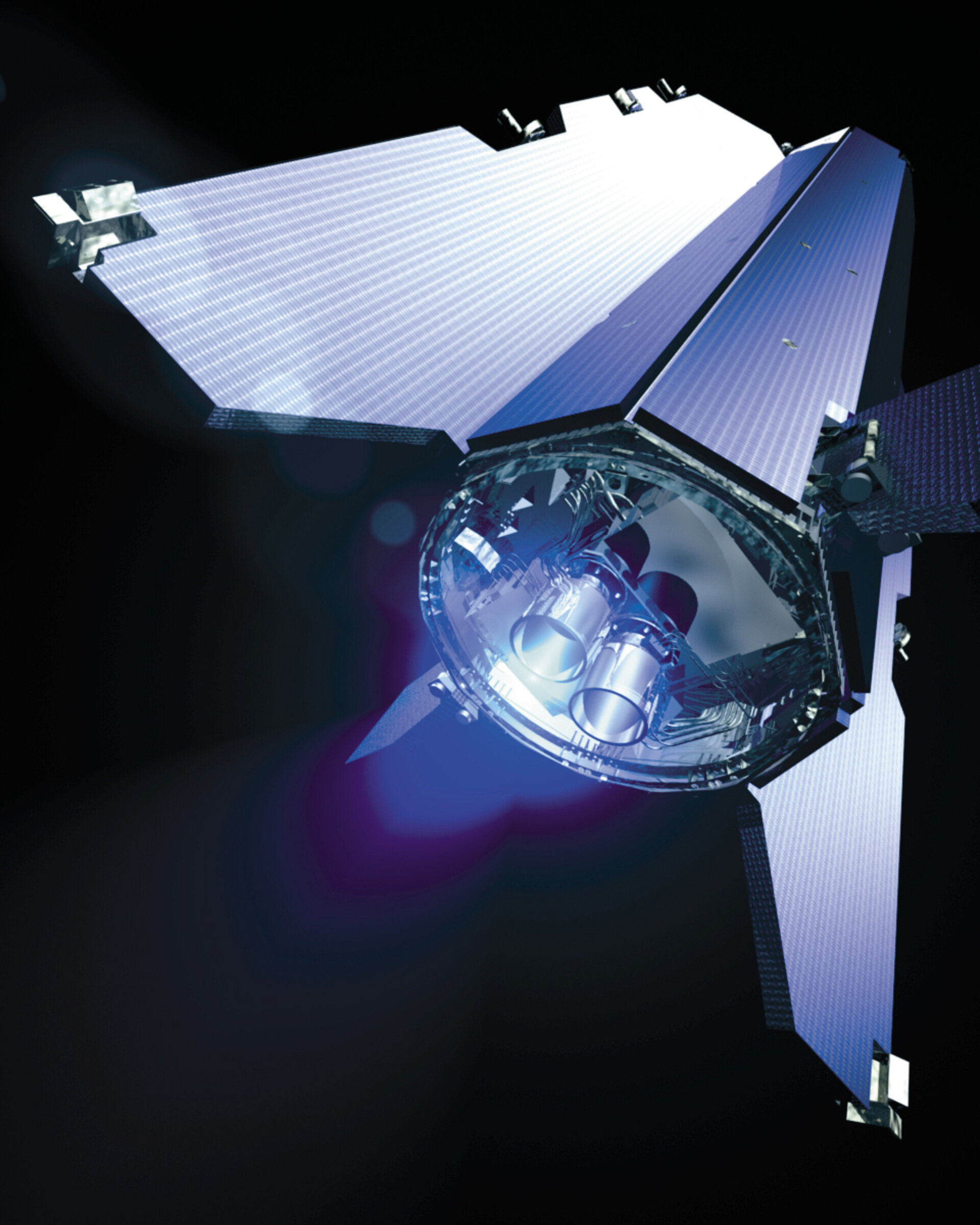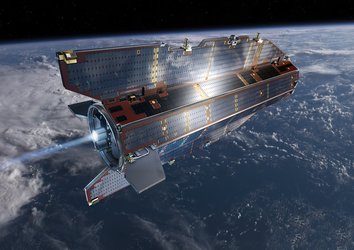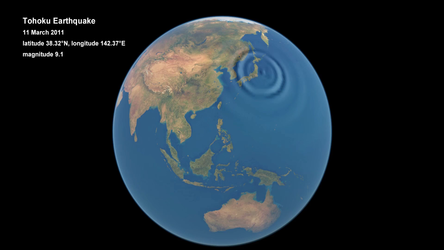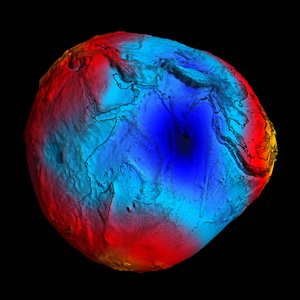Orbiting on the edge yields insight into space weather
ESA’s GOCE gravity satellite may be in its final weeks in orbit around Earth, but some of the most exciting scientific analysis of the mission’s data is only just starting.
Carrying the first 3D gravity gradiometer in space and orbiting lower than any other research satellite, GOCE has spent more than four years measuring variations in Earth’s gravity with unrivalled precision.
The result is the most accurate model of the ‘geoid’ ever produced, which is being used to understand ocean circulation, sea level, ice dynamics and Earth’s interior.
To gain the best possible gravity measurements, the sleek aerodynamic satellite was designed to fly in an extremely low orbit of 255 km above Earth – about 500 km lower than most Earth observation satellites.
Last year, low fuel consumption and relatively quiet solar activity allowed GOCE to be lowered to 235 km, further improving its sensitivity to Earth’s gravity and thus producing even more accurate data.
Orbiting at these low altitudes poses the problem of air drag.
However, thanks to a unique electric ion engine that compensates for drag by generating carefully calculated thrust, GOCE has remained stable throughout its life in orbit.

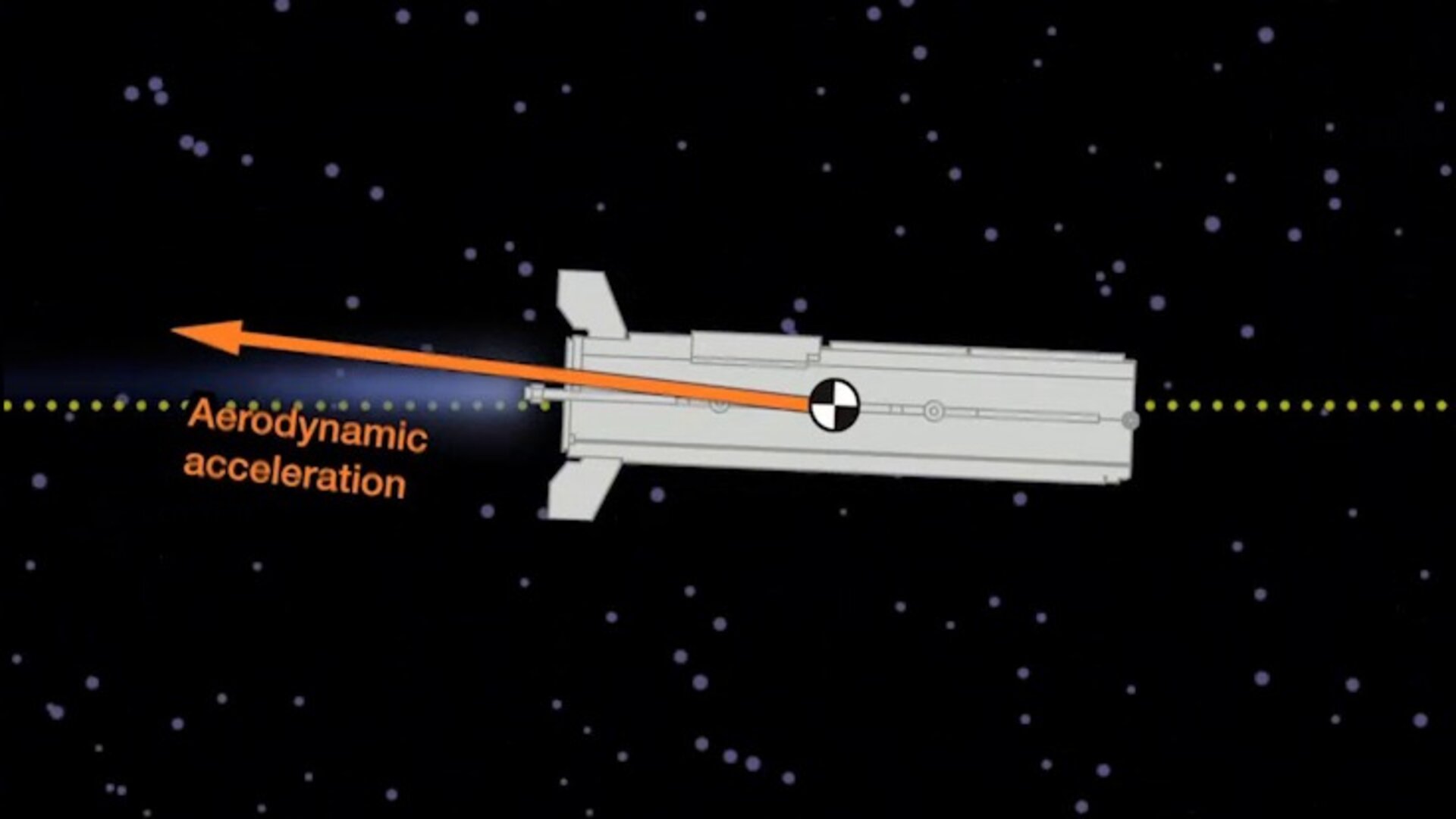
Access the video
As the ion engine responds to tiny changes in air drag, scientists have used the thruster and accelerometer measurements to create a brand new dataset of upper atmosphere densities and wind speeds.
The studies were carried out with the support of ESA’s Earth Observation Support to Science Element programme and the new dataset has recently been made available to the science community.
Eelco Doornbos from Delft University of Technology in the Netherlands said, “The accurate accelerometers that are part of GOCE's gravity gradiometer instrument, in combination with information from its drag-free control system, can be used to detect the aerodynamic force on the satellite.
“This force is caused by molecules and atoms in the upper layer of the atmosphere bouncing off the satellite’s outer surfaces.
“Through careful processing, we have been able to gain four years’ worth of data on upper-atmospheric density and winds from these accelerations.”

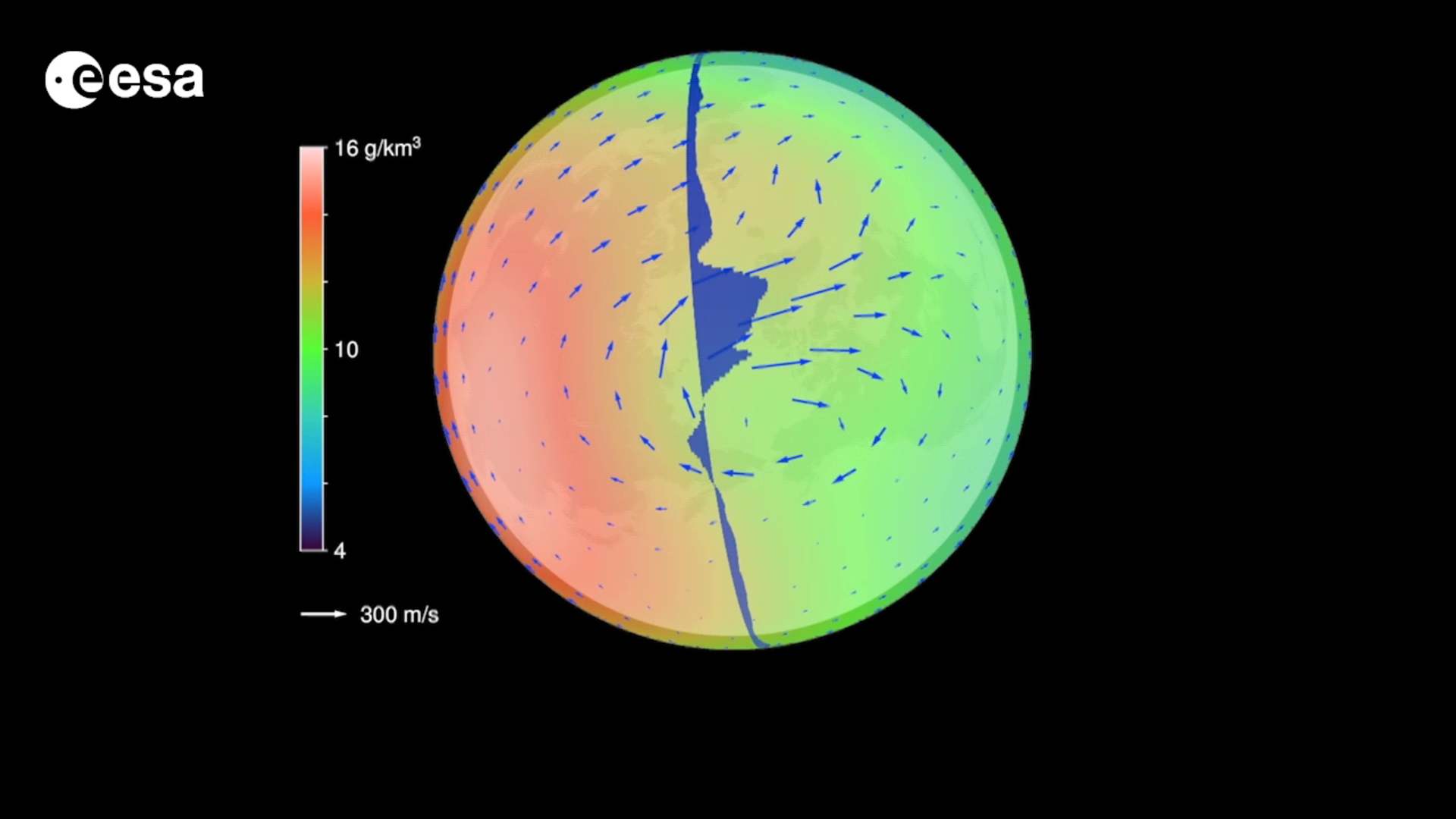
Access the video
Dr Doornbos went on to explain how this novel dataset is shedding new light on the impact that solar activity has on the upper atmosphere.
“The behaviour of the upper atmosphere is unlike what we are used to on the ground.
“Usually, variations in the density of the upper atmosphere are dominated by solar activity, which has a strong 11-year cycle. Since it was launched in 2009, solar activity has gradually increased from a minimum to a maximum, while GOCE’s orbit has been kept at a constant altitude and orientation with respect to the Sun.
“This means that the mission has offered us an excellent opportunity to study the relationship between solar activity and density and wind.”
In the first year after the launch, the Sun was unusually calm with the usual variations in solar activity almost absent.
Observations of density and wind from this period are therefore ideally suited to study how waves originating in the lower layers of the atmosphere influence the upper atmosphere.
Prof. Jeffrey Forbes from the University of Colorado said, “My interest lies in understanding coupling processes between the lower layers of the atmosphere and the upper atmosphere.
“This new dataset from GOCE helps to fill this gap. It allows us to investigate how the wave spectrum in the upper atmosphere evolves with height.”
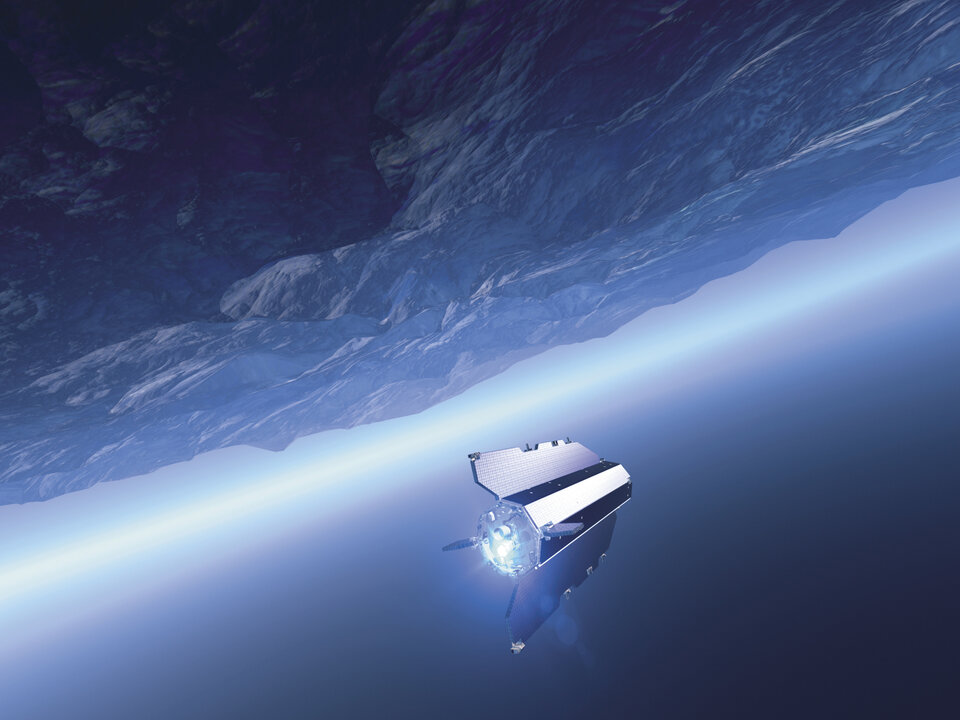
After nearly tripling its planned life, GOCE is at the end of its life in orbit and will soon reenter the atmosphere.
While the satellite’s life may be over, much more exciting science is expected to result from this extraordinary mission.
ESA’s GOCE mission manager, Rune Floberghagen, added, “What we are seeing here are a great pieces of work that go far beyond the original objectives of the mission.
“The type of science addressed here not only looks at the bulk density and winds in the upper atmosphere, but also at the interactions between the various layers of our precious atmosphere.
“It is almost as if we can see weather patterns in the GOCE data.”


